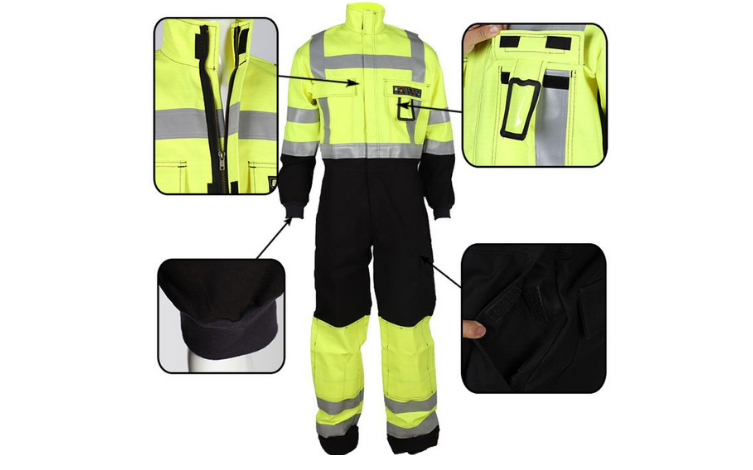So important to pick the right Workwear fabric

Write down the main point of the best workwear fabric?
To execute an excellent job every day, you need more than the necessary skills, training, and motivation. The clothing you wear, as well as the workwear fabrics used to make them, may help you perform better. From customer-facing sectors to demanding vocations around you, we explain which textiles are best for you and your staff uniforms.
Workwear textiles and their purpose
Fast-paced labor in industrial settings needs workers’ capacity to adapt and move quickly while doing complex tasks under duress. For everything from attending to a task that needs physical labor to work swiftly and efficiently while under pressure, industrial employees demand gear that is durable, light, and adaptable.
Polyester and cotton blends that combine the benefits of the two fibers are ideal for heavy, fast-paced industrial jobs. For example, overalls and coveralls have a higher ratio of polyester and a lower percentage of cotton. The result is a tear-resistant, lightweight fabric with added cotton for ventilation and insulation, helping you to stay cool and comfortable even in the most demanding situations.
Why is it so important to pick the right Workwear fabric?
Depending on your occupation, you’ll want workwear material made of fibers that help you reach certain goals. This might entail the following:
Putting your best foot forward for your customers or clients at all times
Working in a high-pressure, fast-paced environment
Working in potentially hazardous or hot environments where you must be protected or kept cool
Workwear textiles that protect, keep clean and keep you cool
Working effectively in scenarios involving hazardous chemicals or hot liquids is an important aspect of the industry’s daily operations. This may involve a chef in a restaurant kitchen producing boiling hot sauces or a beautician using bleaches and dyes to style a customer’s hair.
Fabrics that are durable, resistant to a wide variety of chemicals, quick-drying, and easy to clean are ideal for these applications. This might include garments made of polyesters, such as a salon tunic or a chef jacket. These garments are machine washable, long-lasting, and colorfast, retaining their color and freshness after each wash. Workwear fabrics that are heat-resistant and self-cleaning, such as those with a Teflon coating, can be advantageous in any situation where spills and stains are a possibility.
Workwear Fabric’s Importance
This FR clothing style is popular since it totally covers the body. Coveralls are often worn with gloves, hoods, and base layers (underwear or coveralls). To avoid heat stress, many of these suits include popper fastenings on the side vents and are made of breathable workwear fabrics.
Molten materials or other high-temperature circumstances in the workplace usually put workers’ upper bodies at risk. A shirt made of workwear material is also a possibility in this instance. The remainder of the body is less vulnerable to heat stress since it is not forme of workwear materials. Because they are stylish, these flame-resistant shirts may be worn with any pair of jeans or shorts.
In addition to your regular work attire, you should wear suitable protection clothes while working in jobs that require you to be expose to extreme heat, electrical sparks, or even flames. While AR (Arc Resistant) suits are advise for businesses where electrical sparks may fly, workwear fabric is essential in fire-prone areas. A fire-resistant product is referre to as “flame retardant.” Individuals who are expose to both dangers and fire should wear AR gear, which protects against both. If you operate in a situation where you are continuously expose to fire, however, fire suits are the best option.
What factors should you consider while selecting workwear materials?
When buying workwear, it’s important to understand the difference between flame-retardant and fire-resistant fabrics, which are frequently interchange. Another distinction is that flame retardant clothing is intende to withstand the effects of fire, as well as the definitions of the phrases, resist (delay) and retard (delay) (reduce). Chemically treate flame retardant clothing, on the other hand, is treate externally. While the impacts of both types of clothes are similar, it’s crucial to know the distinctions. Let’s look at a few more things to think about while buying FR suits.
Working in humid and hot environments, as well as with hazardous chemicals, can be challenging in this business. This includes a masseuse in a hot spa or a manicurist at a beauty salon where hot equipment like sunbeds, hair, and nail dryers are frequently utilize. For these kinds of tasks, a lightweight and elastic linen blend is a suitable workwear material. A linen blend tunic. For example, may help a beautician keep cool while caring for customers in a busy salon. By providing comfort, breathability, and flexibility of movement.




